Sony KDL-52W4100 LCD TV Measurements
Settings
Keep in mind that unit-to-unit variations, viewing environment, source, and screen (in the case of front projectors) might render the settings I used less than optimum on some samples of this display. If you try these settings, I strongly recommend that you do so as a starting point, following up with one of the several display-setup DVDs on the market to make certain that the basic picture settings are correct for your situation. Confirmation of the grayscale settings requires a full professional calibration.
Picture Adjustments
Picture mode: Cinema
Back Light: Min
Picture: 94
Brightness: 50
Color: 45
Hue: 0
Color Temperature: Warm2
Sharpness: 2
Noise Reduction: Medium
MPEG Noise Reduction: Off
Advanced Settings
Black Corrector: Off
Advanced C.E.: Off
Gamma: Off
Clear White: Off
Live Color: Off
White Balance
- R-Gain: -1
- G-Gain: -1
- B-Gain: -4
- R-Bias: -3
- G-Bias: 3
- B-Bias: -2
Motion Enhancer: Standard
CineMotion: Auto1
Screen Menu
Wide Mode: Full
Auto Wide: On
4:3 Default: Off
Display Area: Full Pixel
Contrast & Resolution
Peak white level
- Full screen: 30.3fL
- 100 IRE window: 30.2fL
Peak contrast ratio: 2745:1
Overscan
- 480i/p: 3.5%
- 720p: 2.5%
- 1080i/p: 0%
- HDMI/DVI: 37.1MHz
- Component: 37.1MHz
I set the backlight for a comfortable peak white level in a dark room, which achieved a great black level. It also allows for a much brighter picture in a room with ambient light by turning up the backlight control.
The KDL-52W4100 behaves oddly when it comes to black level. Switching from an image with a moderate average picture level (APL) to a black field, I measured a black level of 0.011fL immediately after the switch, but after about five seconds, I saw the black field deepen and measured a black level of 0.003fL, which increased the peak contrast ratio to 10,067:1. Mind you, this happened even though I had turned off all dynamic controls.
These shifts were visible on black full fields but not on normal program material. When watching movies or TV shows, the black level remained elevated for the most part because the APL rarely drops low enough for long enough to allow the black level to drop. This is why I listed the higher black level in my measurements above.
The HDMI and component inputs both rolled off the 37.1MHz burst, but the component input was worse in this regard. Still, the burst was visible in both cases.
Grayscale & Color Temperature
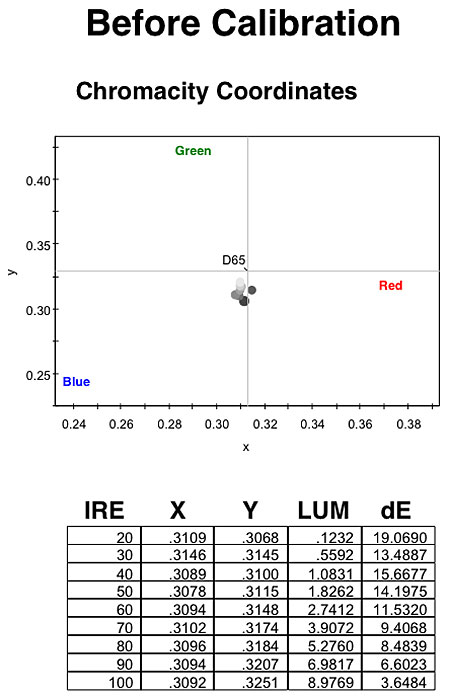
At the Warm2 color-temp setting, the grayscale skewed slightly toward blue/magenta before calibration.

Calibration brought the grayscale more closely in line with D65, though the mid range still deviated a bit toward blue.
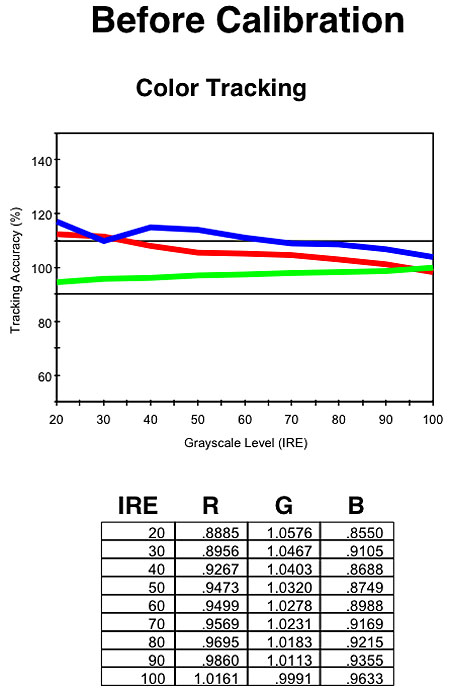
As expected, blue was dominant before calibration, with red matching it in the low end.
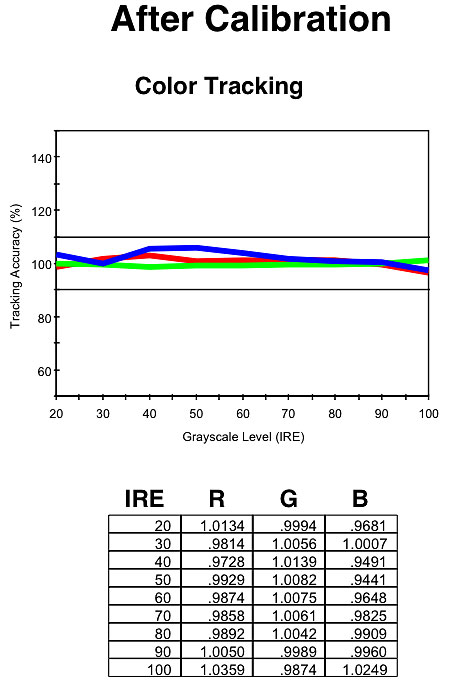
Color tracking improved quite a bit post-cal, though it was somewhat off in the mid range. I calibrated the grayscale at 30 and 80 IRE, but there was nothing I could do at other luminance levels.
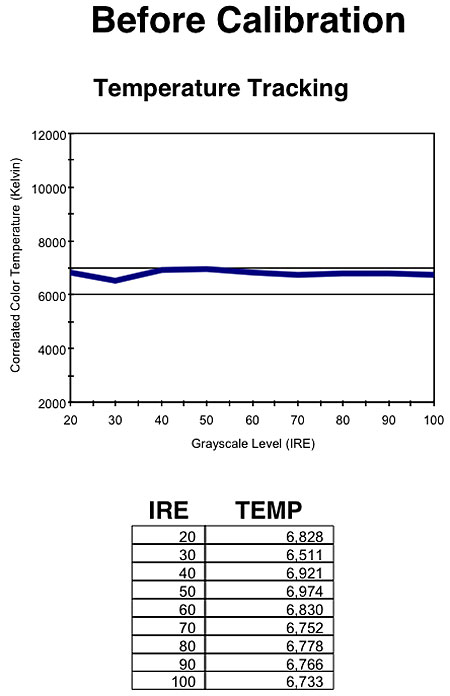
Pre-cal, color temperature tracked a bit high.

Color temperature tracked much closer to 6500K, but it bumped up a bit in the mid range.
Color Accuracy
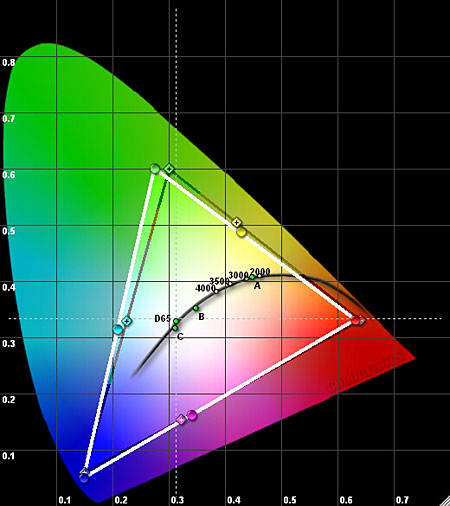
The primary and secondary color points were not far off, but they weren't perfect, either, and this set offers no color-management system to correct them.























































